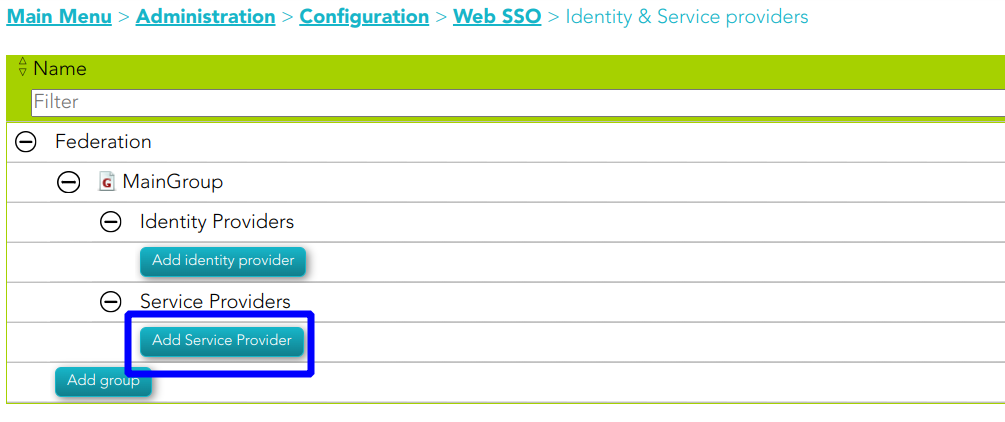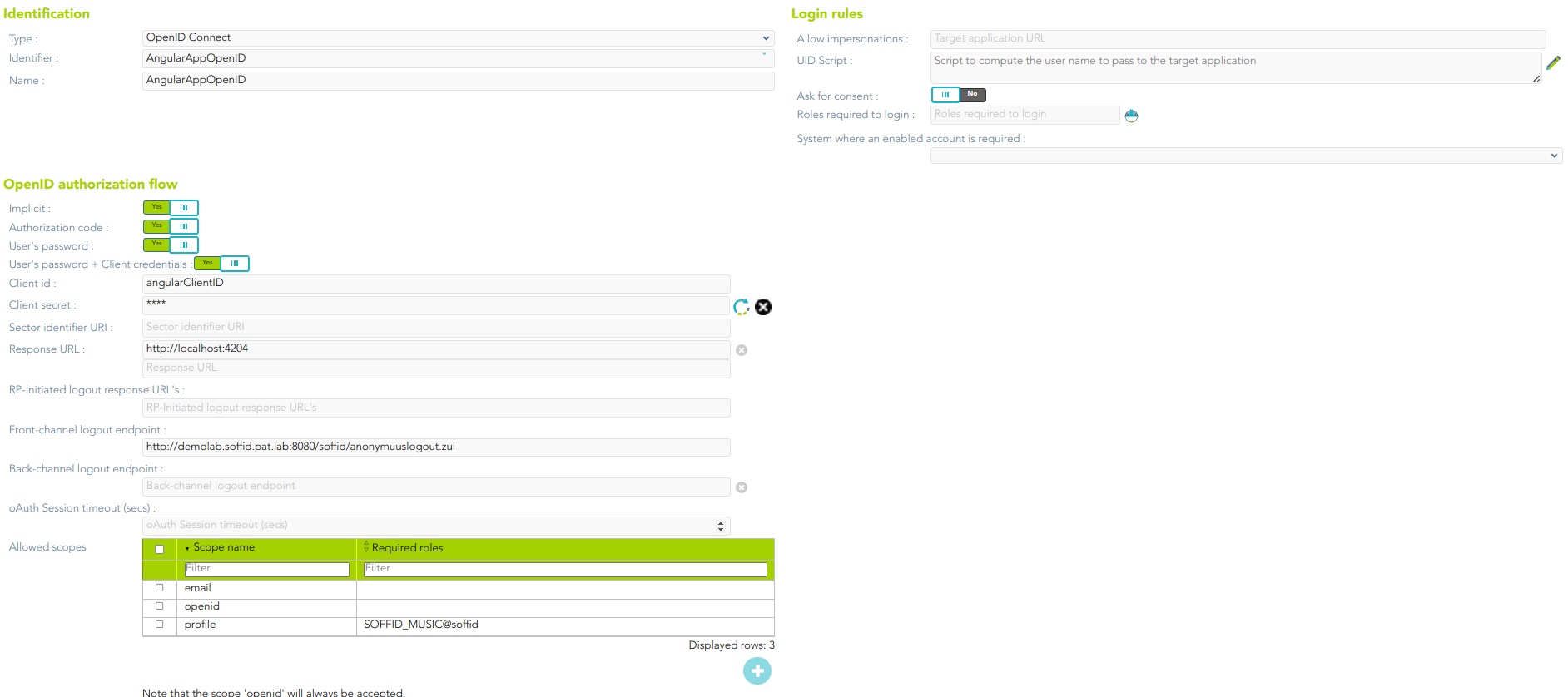Connecting an OpenID Connect service
Introduction
There are three basic OpenID flows, depending whether the service name must be authenticated using its client secret or not:
OpenID flow
Implicit flow
- The Service Provider sends the user to the IdP.
- The IdP authenticates the user.
- The user returns control to the Service Provider along an OpenID token and an OAuth token.
Client credentials flow
- The Service Provider sends the user to the IdP.
- The IdP authenticates the user.
- The user returns control to the Service Provider along an authorization code.
- The Service Provider gets the OpenID token and OAuth token from the IdP by presenting the authorization code, and its client secret. This request is using a direct connection between them.
Password authentication flow
- The Service Provider asks for a user name and password.
- The Service Provider gets the OpenID token and OAuth token from the IdP by presenting the user's name and password, and optionally its client secret. This request is using a direct connection between them.
Register an OpenId Connect Service Provider
1. To register an OpenId Connect service provider, open the federation page:
2. Then, select an Entity Group and the branch Service Providers and click on the Add Service Provider button.
3. Soffid will display the following window:
For more information about the attributes, you can visit the OpenID Connect detailed info.
4. Finally, you must apply changes.
Examples
1. Authorization code flow
The client application creates a random String, named nonce, and sends to the user the following URL
Request
|
https://youridentityprovider:2443/authorization? redirect_uri=https://<serviceprovider>/response& client_id=MYCLIENT& nonce=12345679801234567890& scope=openid+test+other& response_type=code |
Then, the user will be asked for a username and password, or any other means of authentication. After authenticating the user, the browser will be redirected to the URL configured in the service provider page, adding a one-time authorization code.
|
https://<serviceprovider>/response/? |
Once the service provider has received the one-time authorization code, it can connect to the identity provider to retrieve the oAuth token, as well as the OpenID token.
Request
|
POST https://youridentityprovider:2443/token HEADERS Accept: application/json Authorization: Basic dGVzdDp0ZXN0 Content-Type: application/x-www-form-urlencoded BODY PARAMS grant_type=authorization_code& code=XXXXXXXXXXXX |
Parameters
Response
|
{ "access_token":"8bDP2P...", "refresh_token":"gjLmSW...", "id_token":"eyJra.eyJ.LQ_XtHKr.RY3A4...", "token_type":"Bearer", "expires_in":11998 } |
- The id_token tag contains the OpenId token.
- The access_token tag contains the oAuth token.
Before the number of seconds specified om expires_in are elapsed, the token can be renewed by invoking again the token endpoint changing the grant_type:
Request
|
POST https://youridentityprovider:2443/token HEADERS Accept: application/json BODY PARAMS grant_type=refresh_token& refresh_token=gjLmSW... |
Parameters
Response
|
{ "access_token":"8bDP2P...", "refresh_token":"gjLmSW...", "id_token":"eyJra.eyJ.LQ_XtHKr.RY3A4...", "token_type":"Bearer", "expires_in":11998 } |
2. User’s password + client credentials flow
The application asks the user for the user name and password. Then, it connects to the token endpoint to get an access token:
Request
|
POST https://youridentityprovider:2443/token HEADERS Accept: application/json BODY PARAMS grant_type=password& |
Parameters
Response
|
{ |
- The id_token tag contains the openid token.
- The access_token tag contains the oAuth token.
Before the number of seconds specified in expires_in are elapsed, the token can be renewed by invoking again the token endpoint:
Request
|
POST https://youridentityprovider:2443/token HEADERS Accept: application/json BODY PARAMS grant_type=refresh_token& refresh_token=gjLmSW... |
Parameters
Response
|
{ |
3. Closing the session
The application wants to revoke the token and session cookie:
Request
|
POST https://youridentityprovider:2443/revoke HEADERS Accept: application/json BODY PARAMS token_type_hint=token=access_token& token=8bDP2P... |
Parameters
4. Getting user attributes
All the user attributes can be extracted from the OpenID token. Anyway, it is possible to get them in a more readable format user the user-info endpoint.
Request
|
GET https://youridentityprovider:2443/userinfo HEADERS Accept: application/json |
Parameters
Response
|
{ "sub": "admin", "surname": "Admin", "given_name": "Admin", "member_of": [ "TestRole2@soffid", "TestRole@soffid" ] } |
5. Getting a session cookie for the user
Sometimes, a mobile application has authenticated the user using the username & password grant, but wants to share this authenticated session with the underlying web browser. For such a case, the application can request a session cookie with this request:
Request
|
GET https://youridentityprovider:2443/session_cookie HEADERS Accept: application/json |
Parameters
Response
|
{ "cookie_domain": "cookied", } |
Please note that it is mandatory to fill in the name of the cookie in the identity provider, at the session management section


